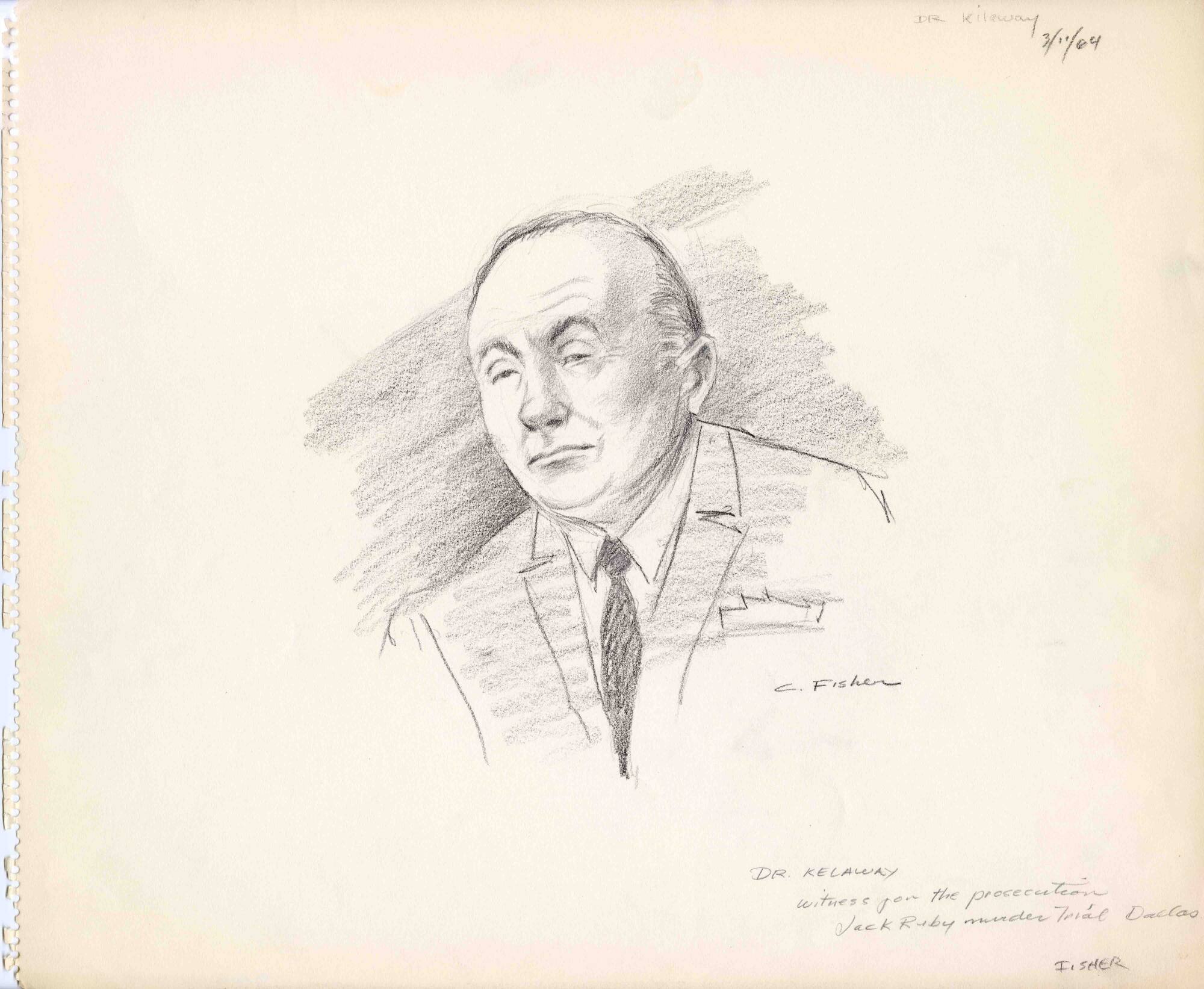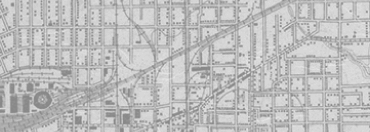


Back
Courtroom sketch of witness Dr. Peter Kelloway dated March 11, 1964
Courtroom pencil sketch on paper by Charles Fisher. The sketch shows prosecution witness Dr. Peter Kelloway during the Jack Ruby trial on March 11, 1964. Dr. Kelloway is wearing a suit and tie and is depicted looking slightly towards the viewer's left. The caption in the top right corner reads "Dr Kilaway/ 3/11/64," and the caption in the bottom right corner reads "Dr. Kelaway/ witness for the prosecution/ Jack Ruby murder trial Dallas."The artist's signature "C. Fisher" is located at the bottom right under the sketch. Charles "Chuck" Fisher was the art director at KRLD-TV in 1963. Fisher made the pencil sketches during the trial of Jack Ruby for KRLD-TV after the judge barred cameras from the courtroom.
Courtroom sketch of witness Dr. Peter Kelloway dated March 11, 1964
03/11/1964
Paper
14 × 17 in. (35.6 × 43.2 cm)
Chuck Fisher Collection/The Sixth Floor Museum at Dealey Plaza
2004.020.0014
A native of South Africa, Dr. Peter Kellaway (1921-2003) was a professor of neurology and neuroscience at Baylor College of Medicine, where he served on the faculty for fifty-five years. Kellaway was considered a pioneering clinical neurophysiologist in the field of pediatric epilepsy. He was called by the prosecution at the Jack Ruby trial to testify on March 11, 1964 and had studied Ruby's electroencephalogram (EEG) charts. He stated that an EEG is "a diagnostic aid" and not "a diagnosis," and he disagreed with the defense expert's interpretation of the Ruby charts. Kellaway testified that while slow waves on Ruby's charts show some abnormality, he characterized it dismissively as "slow activity" and found no evidence that Ruby suffered from psychomotor epilepsy. -- Stephen Fagin, Curator

Courtroom sketch of witness Dr. Peter Kelloway dated March 11, 1964
Courtroom pencil sketch on paper by Charles Fisher. The sketch shows prosecution witness Dr. Peter Kelloway during the Jack Ruby trial on March 11, 1964. Dr. Kelloway is wearing a suit and tie and is depicted looking slightly towards the viewer's left. The caption in the top right corner reads "Dr Kilaway/ 3/11/64," and the caption in the bottom right corner reads "Dr. Kelaway/ witness for the prosecution/ Jack Ruby murder trial Dallas."The artist's signature "C. Fisher" is located at the bottom right under the sketch. Charles "Chuck" Fisher was the art director at KRLD-TV in 1963. Fisher made the pencil sketches during the trial of Jack Ruby for KRLD-TV after the judge barred cameras from the courtroom.
Courtroom sketch of witness Dr. Peter Kelloway dated March 11, 1964
03/11/1964
Artist
Sketches
Trials
Doctors
Witnesses
Artwork
Jack Ruby trial
Kelloway, Peter
Fisher, Charles
KRLD-TV
Dallas
Paper
14 × 17 in. (35.6 × 43.2 cm)
Chuck Fisher Collection/The Sixth Floor Museum at Dealey Plaza
2004.020.0014
A native of South Africa, Dr. Peter Kellaway (1921-2003) was a professor of neurology and neuroscience at Baylor College of Medicine, where he served on the faculty for fifty-five years. Kellaway was considered a pioneering clinical neurophysiologist in the field of pediatric epilepsy. He was called by the prosecution at the Jack Ruby trial to testify on March 11, 1964 and had studied Ruby's electroencephalogram (EEG) charts. He stated that an EEG is "a diagnostic aid" and not "a diagnosis," and he disagreed with the defense expert's interpretation of the Ruby charts. Kellaway testified that while slow waves on Ruby's charts show some abnormality, he characterized it dismissively as "slow activity" and found no evidence that Ruby suffered from psychomotor epilepsy. -- Stephen Fagin, Curator









